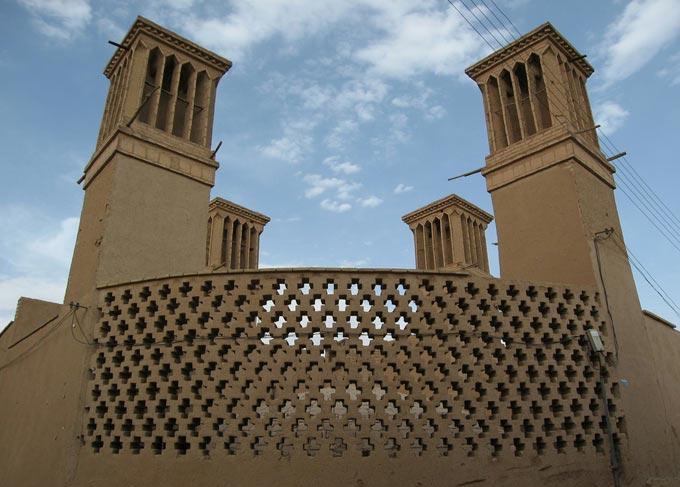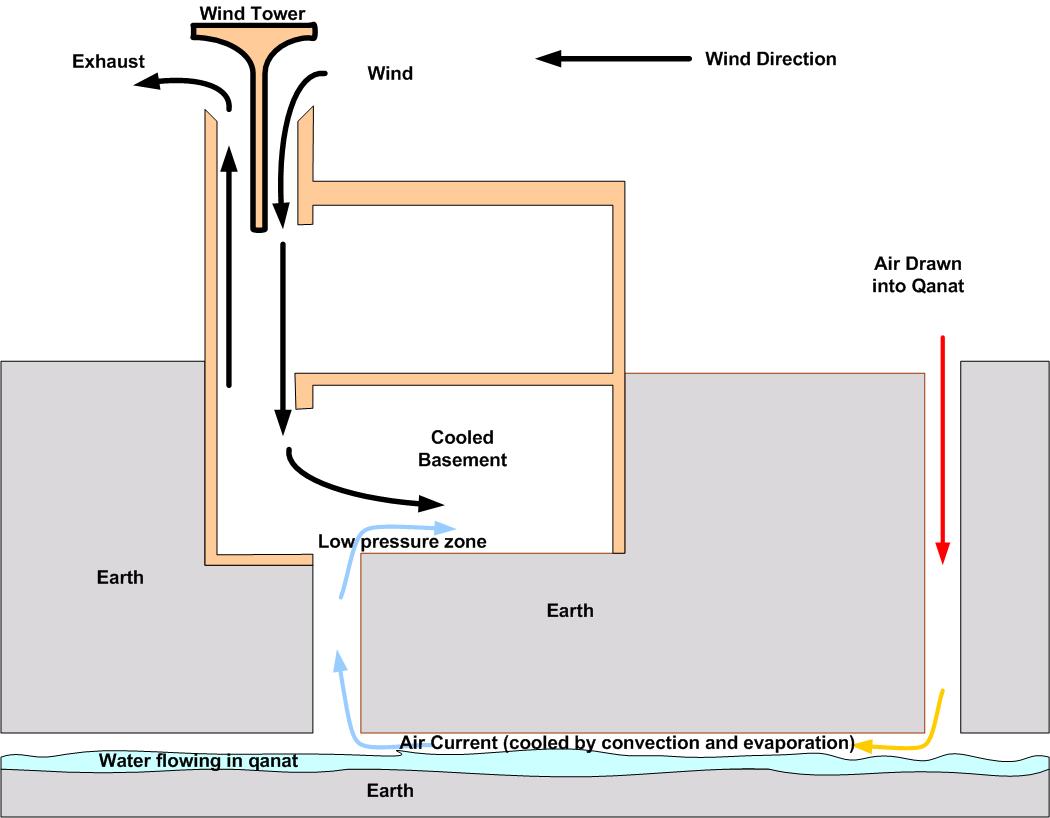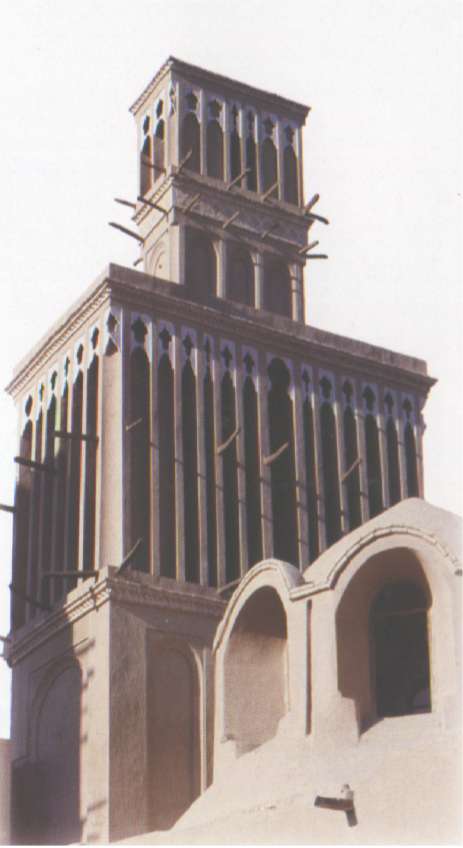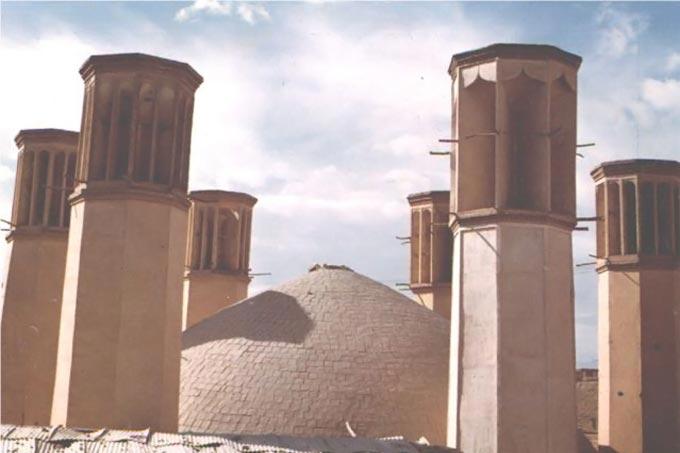The article “The Wind Catchers of Yazd” was originally published in the Historical Iran Blogspot venue on December 20, 2009. Kindly note that excepting two images, none of the other xx images and accompanying captions printed appear in the original Historical Iran Blogspot posting. In addition, the version printed below has been slightly edited from its original in Historical Iran Blogspot.
Readers further interested in this topic may also consult the following resources:
- The Ancient Persian Way to Keep Cool
- Badgir: Iran’s Ancient Air Conditioning System
- The Ice Houses of Iran
- Ancient Advanced Technology: 2400-year Old Yakhchals kept Ice in the Desert
- Sassanian Engineers & De-Humidifier Systems
=======================================================================================
The city of Yazd’s first mention in historic records predate it back to around 3000 years B.C. when it was related to by the name of Ysatis, and was then part of the domain of Medes, an ancient settler of Iran. In the course of history due to its distance from important capitals and its harsh natural surrounding, Yazd remained immune to major troops’ movements and destruction from wars, therefore it kept many of its traditions, city forms and architecture until recent times. One of the distinctive features of the cities of Yazd province which distinguish it from other cities is the existence of various wind catchers.

A Badgir system at Yazd (Source: www.Persian-Star.org). For more see Badgir-Iran’s Ancient Air Conditioning System …
A wind catcher is a high structure on the roof under which, in the interior of the building, there is a small pool. It is capped and has several directional ports at the top (traditionally four). By closing all but the one facing away from the incoming wind, air is drawn upwards using the Coanda effect, similar to how opening the one facing the wind would push air down the shaft. This generates significant cooling ventilation within the structure below, but is not enough to bring the temperature below ambient alone. The key to generating frigid temperatures is due to the existence of a significant air gap above the pool. Completely shaded from the sun, the pool aggregates the cold, sinking air of the night, which is then trapped within, unable to rise up to the less dense surface air. A wind catcher, however, can create a pressure gradient which sucks at least a small amount of air upwards through a house. This cool, dry night air, being pulled over a long passage of water, evaporates some of it and is cooled down further.

Schematic design illustrating the engineering of the Badgir system (Source: Historical Iran Blogspot).
Most wind catchers belong to old residential houses. On the other hand majority of urban reservoirs and mosques also have wind catchers. In other words the same are considered as respiratory tracts of the city. They are towers that, in respect to the special form of building, direct the natural air current to different sections of the building. Regardless of its utility, the height and adornments of these wind catchers used to represent the owner’s distinction and social standing.

A section of a Badgir in Yazd (Source: Historical Iran Blogspot).
One of the more notable wind catchers in Yazd is in Dolat Abad Garden. This Garden has an aggregate of different buildings which were designed and constructed during the time of Mohammad Taghi Khan in the Zandieh era. It was the residence of Khan and his government and officials. The wind catcher of this garden is 33 meters high and is considered an architectural masterpiece and a symbol of the Yazdi architects’ genius, mental ability, talent and art. The most significant characteristics of the design of this building is believed to be the attempt of the architect in selecting tactful angles for providing the best views and landscape internally.

The world’s sole 6-Badgir water reservoir in the world at the ancient Iranian city of Yazd -تنها آب انبار شش بادگیری جهان-. (Above photo appeared in www.Persian-Star.org). Note also the below summary of the 6-Badgir at Yazd in Persian by the www.Persian-Star.org website:
ب انبار شش بادگیر یزد به دلیل دارا بودن شش بادگیر به این نام معروف شده و تنها آب انبار شش بادگیر جهان است. سه بادگیر آن از ابتدا ساخته شده بود و سه بادگیر دیگر بعدها به آن اضافه شده است، با کمی دقت در شکل بادگیرها تفاوت سه بادگیر قدیمی با دیگر بادگیرهای آن را می توان مشاهده کرد. شش بادگیر آب انبار با توجه به شرایط اقلیمی و جهت باد در این منطقه به شکل هشت وجهی هستند. شهر یزد همچنین دارای تنها آب انبار هفت بادگیری جهان با دو مخزن است که در روستای عصر آباد قرار دارد.
English Translation: The 6-Badgir water reservoir at Yazd is named as such due to its possesion of 6 Badgirs, the only such water reservoir in the world. The reservoir was first built with three Badgirs with the three other Badgirs constructed later (it is possible to see the differences between the older and newer Badgirs). Note that the Badgirs have been built in an octagon fashion due to considerations of wind patterns and geographical factors. Yazd also has the world’s only seven-Badgir water reservoir (contains two reservoirs) which is located in the village of Asr-Abad.
So effective has been the wind catcher in Persian architecture that it has been routinely used as a refrigerating device, in the form of an ice pit, for ages. Many traditional water reservoirs (ab anbars) are built with wind catchers that are capable of storing water at near freezing temperatures for months in summer. In 2005 a firm attempt was to be made to introduce wind catchers as Iranian symbols, said Esfandiar Rahim Mashayi, director of Iran’s Cultural Heritage and Tourism Organization (ICHTO). The announcement came at a time that UAE had tried to call these structures Arabic.



